|
RAGDOLL
At the bottom
of this site you can see some pictures of ragdolls, mainly
ours.
Characteristics
They gained its special name thanks to being entirely
relaxed when you hold them. They are amazingly intelligent, elegant and
they are always in a good mood. They do not enforce or bother but they react to
any of the change of your mood. They are easily educated,
trustful, quiet and peaceful cats which rather fall back to use their
claws and teeth in case of danger. Ragdolls are said to be remarkably
patient cats resisting to any stress. They are dependant on their owners.
Moreover they follow their owner´s every step.
Ragdolls love people, they do not like loneliness.
However they do not mind being home alone for several hours. So
those who stay out of his house all the day, should make it
possible for their cats to meet some other cats as they can
extremely suffer from loneliness or their owners´ lack of
interest.
Most of the representatives of this breed are very tolerant and
sociable which is good presumption for sharing flat with another cat. They can
be easily integrated into an already existing pack of cats provided that they
are tolerant as well. Ragdolls are very curious creative and playful. A great
number of ragdolls are fond of retrieving various things. They are cats with
wonderful character, and they love caressing very much. With regards to its
peaceful and submissive character with a great deal of trust towards people and
other animals it is not proper to leave them outdoors alone. They will
appreaciate a free range but it is not better to breed them in the house
conformed to cats´ needs. Of course, the most important for them is the
contact with their owners. They feel good wherever they are with their owners.
Ragdolls are suitable for Felinoteraphy thanks to
their peaceful and wellbalanced character. Felinoteraphy is
one of the fields of zootherapy. It si supporting treatment of
somatic, especially psychic disorders and pressures on human being
using the contact with a cat.
Development of Ragdolls is slow. Kittens are born
white and become clourful gradually. Not before the age of three or
four they reach the bodily maturity and even the colour of their
fur is completed at the same time. Anyway they have fantastic blue
eyes just after they were born. Males can weigh from 7 to 9
kilogrammes and females from 4 to 7 kilogrammes.
Ragdolls belong among more expensive breeds of cats.
Their price depends on whether it is a kitten kept as a
nesting pet or superior breeding cat.
Care
The care about the fur is not difficult. Their soft
and silk fur of medium length does not tangle and therefore it is
sufficient to brush once or twice a week but carefully. On the
contrary, during the changing of the fur it is necessary to brush
it more often. Several days before the exhibition is held you can
wash or powder the fur by non-perfumed powder.
History
The history of this breed is quite short. In
1965 it was acknowledged in America. Variation "bicolor" was
acknowledged in 1992, "colorpoint" in 1997 and in 1999 it
was "mitted" to be recognized.
There is a great number of superstitions and fabrications
connected to this breed. This medium long-haired cat was cultivated by Ann
Baker from California in 1960´s. It came into an existence in the
breeding station called Raggedy Ann through pairing a white blue-eyed
Persian called Josephine whit Tom cat of Birma breed Before Josephine
gave a birth to her kittens, she had an accident. Fortunately she survived and
her kittens stayed alive. These kittens (Daddy Warbucks, Fugiana a Buckwheat)
are considered to be the basis for the consecutive Ragdoll breeding. Ann
Baker claimed that Josephine is all at once totally insensitive feeling no pain
and so flaccid like a rag doll when it is raised up in the air.
There comes the origin of the breed name. According to Anna,
kittens resembled these features which is from the genetic point of view
absolutely impossible. Ragdolls are sensitive like any other cats.
Denny and Laura Dayt from the breeding station Blossom-Time and
Georgann Chamber from a breeding station Ragnarok were not willing to submit
to Ann Baker who defined conditions for breeding and orders which aimed at
profit. American Ragdoll breeding devided thus into two groups: IRCA
(International Ragdoll Cat Association) represented by Ann Backer and RFC
(Ragdoll Fancier's Club), which was established by the Daytons in 1975, became
an outstanding basis for nowadays Ragdoll Breeding.
Standard:
Ragdolls range in 3 types:
- Colorpoint - attributes: ears, mask, legs and tail should be
well-coloury and go with the body colour. Chest, belly and breast front
are light. Slight shading on body and belly (belly spot - admitted).
Colorpoint is not allowed to have any white spot. Nose and paw pads must
be dark in the colour of attributes. Genetical code ss. (viz. pictures)
- Mitted
- the same attributes as with colorpoint. White "socks" on
paws. Front legs shorter, back legs longer - to the heel.
White stripe from chin to tall radix. Paw pads - pink.
Attractive white mirror on the nose. Dark spots on socks -
not admitted. Genetical code S2s. (viz. pictures)
- bicolor - dark colour of ears, back, tail and mask, on
which a well-visible white "V" is required. White spot on the back
is admitted. Legs and belly white without dark spots. No white
spots on ears or tail are accepted. Nose and paw pads must be
pink. Bicolor = High mitted - genetical code S2S2; bicolor true -
genetical code S4s; Mid high white - genetical code S4S2; High
white/van - genetical code S4S4. (viz. pictures)
RAGDOLL
VARIETIES:
Dam + Sire = kittens
(HM=high mitted, MHW=mid high white, HW=high white/van)
colorpoint + colorpoint = colorpoint 100%
colorpoint + mitted = mitted 50%, colorpoint 50%
colorpoint + HM = mitted 100%
colorpoint + bicolor true = bicolor true 50%, colorpoint 50%
colorpoint + MHW = bicolor true 50%, mitted 50%
colorpoint + HW = bicolor true 100%
mitted + colorpoint = mitted 50%, colorpoint 50%
mitted + mitted = HM 25%, mitted 50%, colorpoint 25%
mitted + HM = HM 50%, mitted 50%
mitted + bicolor true = MHW 25%, bicolor true 25%, mitted 25%, colorpoint
25%
mitted + MHW = MHW 25%, bicolor true 25%, HM 25%, mitted 25%
mitted + HW = MHW 50%, bicolor true 50%
HM + coloroint = mitted 100%
HM + mitted = HM 50%, mitted 50%
HM + HM = HM 100%
HM + bicolor true = MHW 50%, mitted 50%
HM + MHW = MHW 50%, HM 50%
HM + HW = MHW 100%
bicolor true + colorpoint = bicolor true 50%, colorpoint 50%
bicolor true + mitted = MHW 25%, bicolor true 25%, mitted 25%, colorpoint
25%
bicolor true + HM = MHW 50%, mitted 50%
bicolor true + bicolor true = HW 25%, bicolor true 50%, colorpoint 25%
bicolor true + MHW =HW 25%, MHW 25%, bicolor true 25%, mitted 25%
bicolor true + HW = HW 50%, bicolor true 50%
MHW + colorpoint = bicolor true 50%, mitted 50%
MHW + mitted = MHW 25%, bicolor true 25%, HM 25%, mitted 25%
MHW + HM = MHW 50%, HM 50%
MHW + bicolor true = HW 25%, MHW 25%, bicolor true 25%, mitted 25%
MHW + MHW = HW 25%, MHW 50%, HM 25%
MHW + HW = HW 50%, MHW 50%
HW + colorpoint = bicolor true 100%
HW + mitted = MHW 50%, bicolor true 50%
HW + HM = MHW 100%
HW + bicolor true = HW 50%, bicolor true 50%
HW + MHW = HW 50%, MHW 50%
HW + HW = HW 100%
Ragdolls range in 4 accepted colours:
- seal - black-brown
- chocolate
- blue
- lilac
- recently acknowledged colours - since 1. 1.
2005 - red, cream, lynx, tortie, torbie
General standard:
| General standard: |
Ragdoll is a massive big cat with medium
physique. It makes a global impression of a strong, big
cat. |
| Head: |
From - medium - sized, modified V-forming with a flat
looking spot between ears. |
| Nose: |
Should have a slight bow in the upper third. |
| Face: |
Cheeks are well-formed, narrowing into aq
well-developed chinand round mouth. |
| Ears: |
Medium - sized a wide base, round tops, widely set
on the head, slightly disposing forward. |
| Eyes: |
Big and oval, eye tail should form a direct line with
position a ears. Blue colour, the more intensive, the better,
in regard to body colour. |
| Neck: |
Short and strong. |
| Body: |
Long with medium bone composition, muscular. Wide
and well-developed chest, back part is muscular and heavy.
Adult individual should be as wide in shoulders as in the
back part. |
| Legs: |
Of medium length with medium bone composition. Back
legs are slightly taller, owing to which the back body
part stretches upward. |
| Tail: |
Long, medium thickness at radix, narrowing proportionally
towards its end. Well furred, thick. |
| Hair: |
Medium length, thick, soft and silky structure,
stuck on body, breaqking in movement. Neck hair is the
longest, lining outer face edge, making thus a "shirt-front"
impression. Hair in the face is short, gradually changing
into longer one at the end of head acroos the chest. On
sides, belly and back part of the corpus it is of half-length
to long, on front legs it is short to half-length. |
|
|
Deficiencies:
- narrow head
- stop, Roman nose
- big or small, pointed ears
- almond - shaped eyes
- too long or too short neck
- stubby corpus, narrow chest
- short legs, distended toes, missing beards between toes
- short tail, butt tail end
- short hair (considering season)
Disqualification- different eye colour than blue.
Notes:
- female cats are obviously smaller than male ones
- male expression is preffered
- slow development - up to 4 years.
PICTURES:
Colorpoint:
seal colorpoint
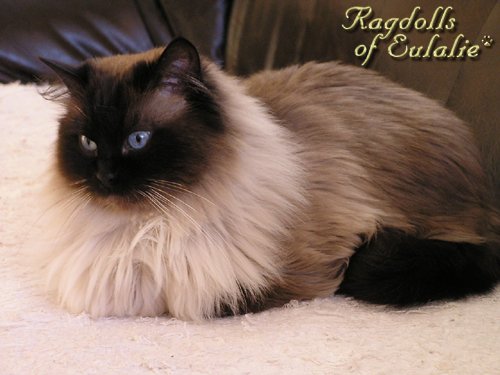
seal colorpoint -
ASTARA
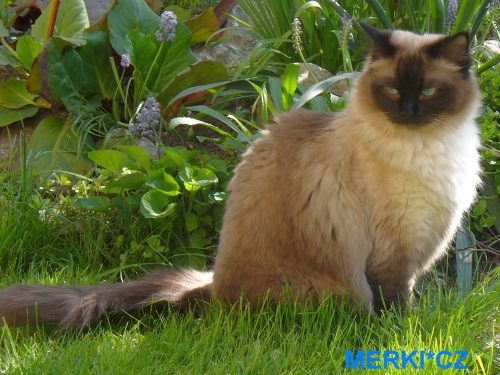
cream colorpoint
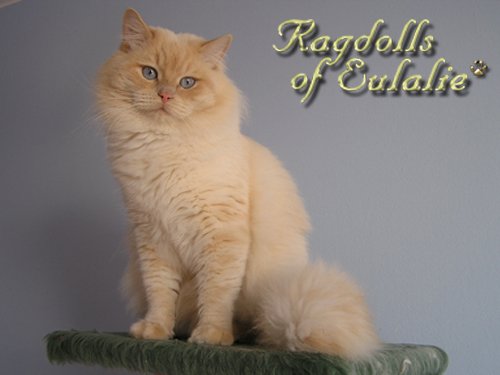
cream colorpoint -
our ATIILA
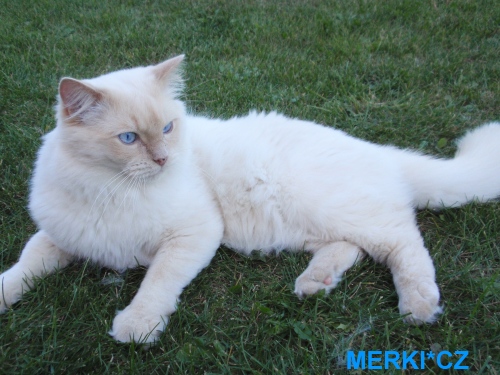
red colorpoint -
ARES
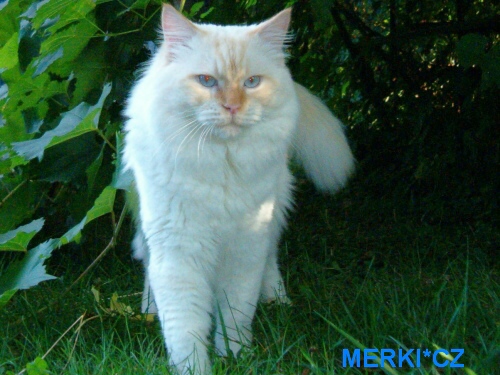
blue colorpoint -
EDDY

blue lynx
colorpoint - GORDY
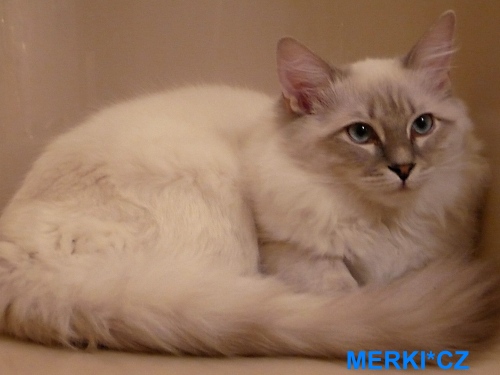
lilac lynx colorpoint - IDEFIX
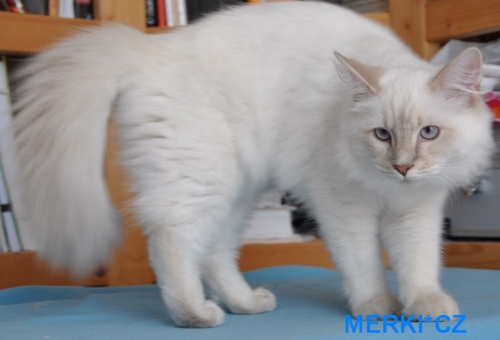
lilaccream lynx colorpoint - CHERIE
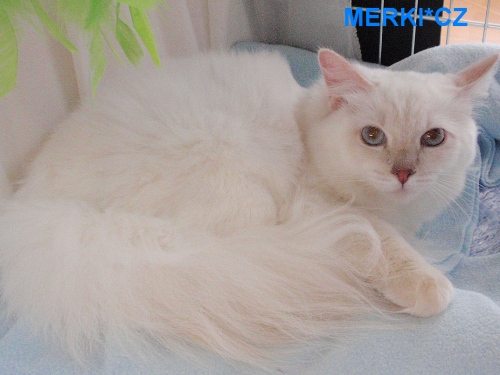
HAWKEY + LILI
Supposed date of
birth: summer/autumn 2012
Expected
colours:
colour: seal, blue, red,
cream, torti, blue tortie; variety: colorpoint, bicolor true. chocolate
colorpoint - POLO
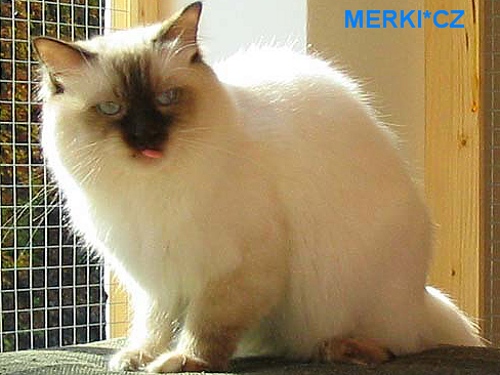
tortie colorpoint - our LILI
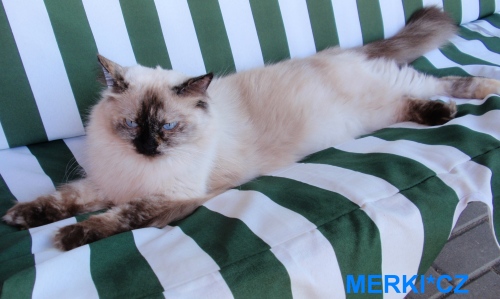
blue tortie colorpoint - ANDROMEDA
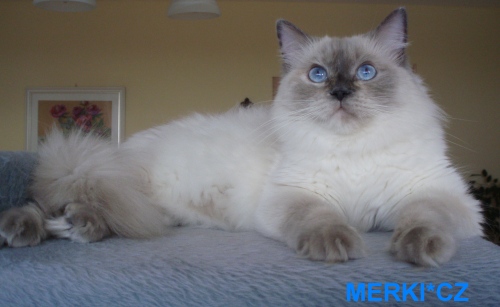
blue tortie
colorpoint - EMMA
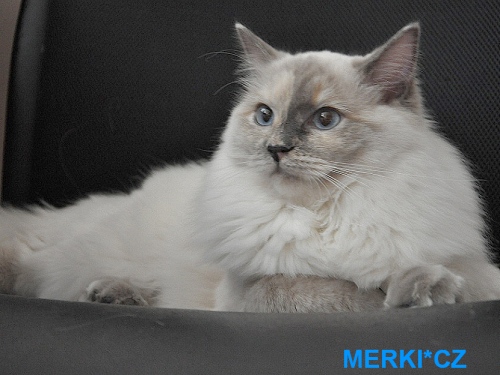
Mitted
seal mitted
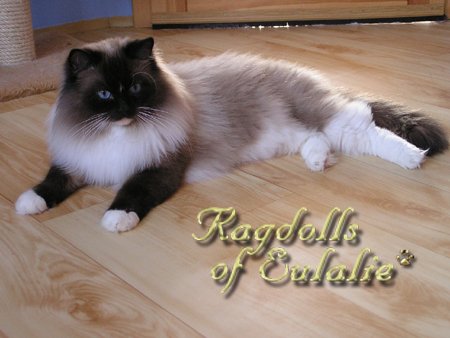
blue lynx mitted -
our EUPHORIA
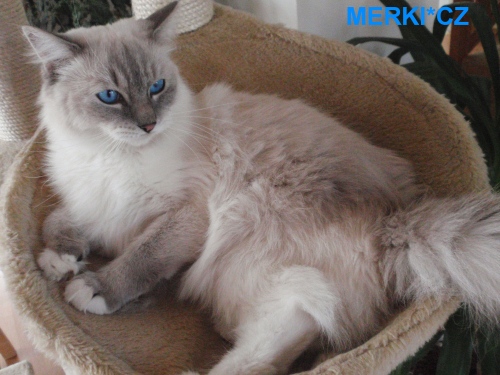
chocolate mitted
- YUCON
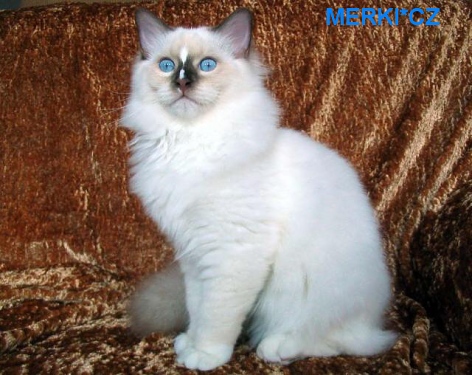
chocolate lynx mitted -
GRETKA
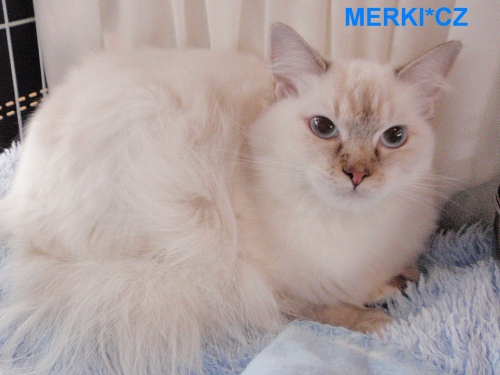
tortie mitted - our KAROLINA

Bicolor
seal bicolor -
BASTET
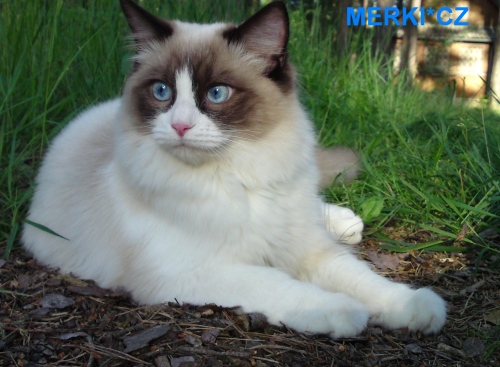
blue bicolor -our Hawkey

red bicolor -
ADONIS

cream bicolor - APOLLON
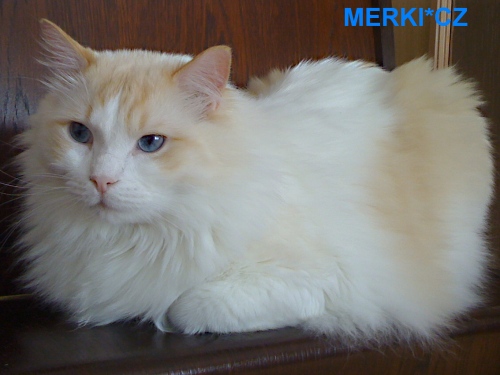
blue cream bicolor - WIKI
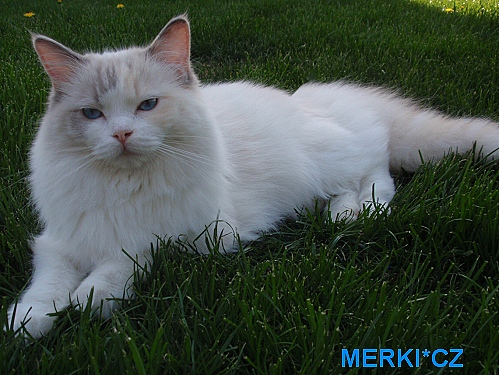
tortie bicolor - BELLONA
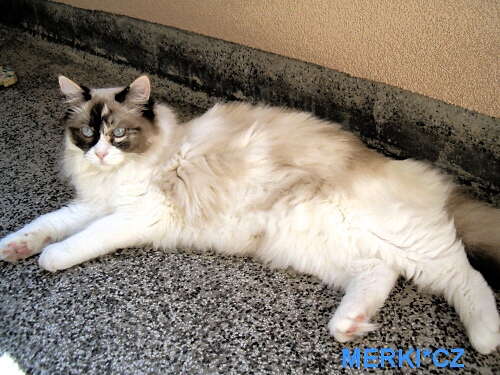
blue lynx
bicolor - GAIA 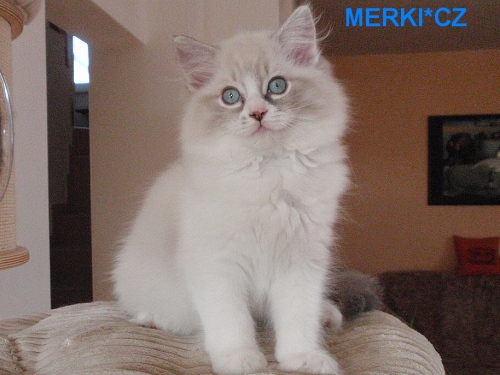
|
























